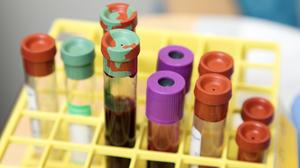Loading...
Found 373 Barrett's Esophagus trials
A listing of Barrett's Esophagus medical research trials actively recruiting patient volunteers. Search for closest city to find more detailed information on a research study in your area.
To compare the effectiveness of two approaches for the management of BE and LGD, endoscopic surveillance and endoscopic eradication therapy (EET), using accepted clinical endpoints of neoplastic progression [high-grade dysplasia (HGD)/mucosal esophageal adenocarcinoma (EAC)/invasive EAC] as determined by a blinded central adjudication committee
Glucose is a major energy source for brain cells. Changes in blood glucose also leads to changes in supply or availability of glucose to brain cells. Changes in various brain metabolites when mapped in different areas of the brain will allow, an understanding of the effects of such changes in …

Currently, this study is recruiting among patients at Penn Medicine. It is not accepting non-Penn Medicine patient participants.The objective of the study will be to evaluate the efficacy and safety of oral N-acetylcysteine (NAC) in patients with retinitis pigmentosa (RP). The study is a multi-center, randomized, placebo-controlled study where adult …

Some samples (for example, blood, tissue, fluids) taken from you during this or another research study might be useful for research at some later date. This study is being done so that your samples can be stored and used at some later date for research studies, including genetic testing. These …

This study is designed to investigate the safety, diagnostic performance, and clinical usefulness of Gleolan for the real time detection and visualization of meningiomas during tumor resection surgery. Potential patients who sign informed consent will be screened for eligibility before receiving an oral solution of Gleolan 3 hours prior to …
This research study is being conducted to determine if a new investigational device (Instylla Hydrogel Embolic system) can be used to treat tumors which have an extensive blood supply. This means that the tumors have many blood vessels feeding them. This product will be used to close blood vessels supplying …
The purpose of this protocol is to allow for intraoperative electrophysiological recording from patients already scheduled to undergo a craniotomy that will expose the cerebral cortex. During surgery, a recording array will be briefly placed on the surface of the brain and signals will be recorded while the patient is …
This is a prospective pilot study in which all eligible subjects will be randomized to treatment in the first phase and those with persistent or recurrent heart failure after Phase 1 therapy, may subsequently qualify to be randomized into Phase 2.
Specific Aim 1: To image the intracranial artery vessel walls (brain), we will evaluate and compare scans acquired using standard-of-care T1 SPACE and T1 MPRAGE sequences with novel accelerated pulse sequences in patients with suspected intracranial vasculopathy. Specific Aim 2: To image the extracranial artery vessel walls (neck). We will …
STAGE 1: This is an open-label safety study of enobosarm 9 mg QD coadministered with a CDK 4/6 inhibitor (abemaciclib), 150 mg BID. STAGE 2: This study is a multicenter, randomized, open-label, two treatment arm, efficacy and safety study. Subjects will be randomized to the two treatment arms (Enobosarm Combination …